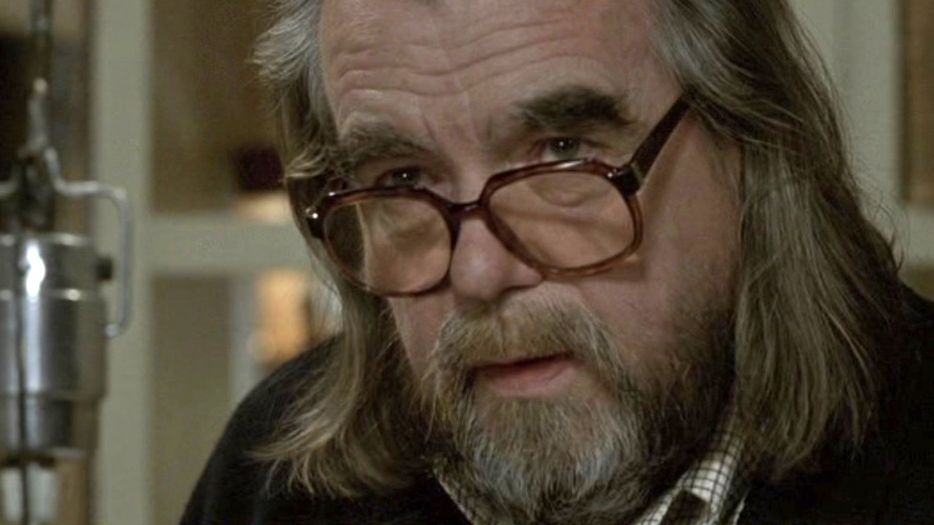Marking the 20th anniversary of the action thriller "Ronin" this month, we're here to take another look at an international spy thriller that almost sailed under the radar when it was released, despite a formidable cast -- a once-in-a-lifetime ensemble that could not be easily rounded up today -- and some of the best car chases ever committed to film. Directed by John Frankenheimer and filmed in France, "Ronin" occupies a unique spot among the genre action films of the era, combining a tense visual style with a complicated plot full of double-crosses and betrayals.
It also occupies a special place in the pantheon of car films.
Written by J.D. Zeik and David Mamet (the bulk of the screenplay credit is a matter of some dispute), the film exists in a post-Cold War landscape filled with former spies trying to earn a living, working for a shadowy organization to gain control of a mysterious briefcase that is being sold from one group to another.
The cast, led by Robert De Niro, Jean Reno, Natascha McElhone, Stellan Skarsgard, Sean Bean, Skip Sudduth, Michael Lonsdale and Jonathan Pryce, is a potent group doing some of their most brooding work amid plenty of powerful low-key performances from background characters, and an equally formidable cast of cars.
As much as the briefcase served as a MacGuffin for the plot of "Ronin," the film itself was a MacGuffin for director John Frankenheimer's obsession with cars. Frankenheimer picked all the vehicles himself, pitting an Audi S8 against a Citroen XM and a Peugeot 406 against an E34-generation BMW M5. The attention to detail and the level of preparation of the stunt driving in the film is legendary itself: French Formula 1 driver Jean-Pierre Jarier did a lot of the stunt driving, as did actors like De Niro and Sudduth. Frankenheimer was also able to obtain a film permit to fire guns in the city of Paris at night -- something that had been banned for films for years due to noise restrictions -- and close several of the city's tunnels for filming the complex stunts.
An admirer of European sport sedans, Frankeheimer also had the stunt drivers turn the city of Nice into a game of Tetris, setting loose the rabid Audi S8, Citroen XM and Mercedes-Benz 450SEL 6.9 into the narrow side streets, collecting fish market stalls and cafe chairs in their path as they tore through the center of town. The final street battle took place on a busy motorway in the La Defense financial district of Paris, after a Peugeot 406 piloted by De Niro's character chased the BMW M5 driven by McElhone's character the wrong way through a tunnel of oncoming cars.
We're also here to note a curious thing about "Ronin:" 20 years after its release "Ronin" has never been convincingly surpassed when it comes to realistic car chase scenes, standing alone in a field of battle after a fifth of a century has passed.
The few challengers to its automotive stuntwork were the first two installments of the Jason Bourne film series, neither really committing to indulge the audience in the complex and protracted car chases offered by Frankenheimer's film. The rest of the challengers are of the far less realistic variety: Jason Statham's "The Transporter" films simultaneously took themselves too seriously while prompting the audience to laugh at stunts seemingly conceived by eight-year-olds, while the "Fast & the Furious" franchise gradually became less about street racing and more about a Marvel-type superhero ensemble relying on CGI explosions every five minutes to mask increasingly implausible plots and physics.
"Ronin" made stars out of more cars than actual people -- the cast were already stars -- but cars like first-gen Audi S8 alongside the M5 and the Mercedes 450SEL are now noted among enthusiasts for their participation in the film even if the matchups never quite seemed well-matched.
Would a Citroen XM be able to outrun a nitrous-boosted S8 with over 360 hp on tap? Would an E34 M5 have trouble evading a Pug 406? The S8 never quite lived up to its specs, as the deck seemed to be stacked against German power in favor of French sedans, but the results are fun to watch all the same.
The sheer scale of the stunts, filmed over a relatively short period of time, is difficult to fathom even today in an age of CGI and far more lavish budgets. The fact that Frankenheimer managed to commit so much automotive carnage to film with a budget of $55 million and a deep cast of veteran actors is impressive on its own, even though the film's worldwide box office take barely made its money back, grossing $70.6 million worldwide. (Films generally need a far larger margin to be considered financial successes).
A few mysteries remain hidden in the plot to this day, in addition to just what was in the briefcase.
First, the briefcase itself: It contains something that French operatives have and want to sell, Irish operatives want but don't have the money to buy, Russian operatives want and do have the money to buy, and that the CIA does not want to fall into anyone else's hands. While some theories favor fissile material, we're much more inclined to believe the theory that the briefcase contains stolen printing plates for the new Euro currency -- something that's far more useful to all parties. Besides, Stellan Skarsgard's character would not feel safe mailing it to himself later on if its was radioactive, as the French Postal Service might detect it or mishandle it.
Second, why does De Niro's character Sam not rely on his CIA contacts earlier, especially when the briefcase can be intercepted with the help of just a few more men or destroyed altogether in a roadside bomb? Sam wants the briefcase intact, as do the Irish and the Russians. But at the same time the CIA, represented by Sam, does not want to pay the sellers for its contents, suggesting it would rather see it destroyed than spend the money to pay for its ransom. Whether Reno's character Vincent represents French intelligence in the film is never really answered, but Vincent is too invested in the outcome to be just another freelancer. Why neither fully rely on their agencies is never really answered in the film, but the political importance of whatever is in the case to the Good Friday Agreement is noted at the end, suggesting both were working for intelligence services undercover as mercenaries.
Third, Michael Lonsdale effectively reprises his "Ronin" character Jean-Pierre in the 2005 Steven Spielberg film "Munich," playing a French information broker with ties to intelligence agencies. As in "Munich," set in the 1970s, he lives in a chateau, owns German shepherds and speaks in the same poetic manner about the nature of his business.
"We inhabit a world of intersecting secrecies, living and dying at the places where these secrecies meet," Lonsdale's character says in the later film. "This is what we accept. Hmmm?"
We're inclined to believe the theory that his character is based on a real person, with Lonsdale effectively playing the same character later in life, in retirement, in "Ronin."
Fourth, there is The Man in the Wheelchair, who is never shown but referenced in dialogue as a broker for mercenary crews. Interestingly enough, this is said to be a reference to Robert Ludlum's 1980 novel "The Bourne Identity," and a character never shown nor referenced in the 2002 film. Is this yet another character likely based on a real-life person?
Finally, there is the mystery of why no sequel has emerged, one with the same or a different cast of mercenaries being rounded up for an operation. The franchise potential, given the cult status of the original film, is arguably one of the biggest missed opportunities for MGM and United Artists, which produced "Ronin."
For instance, we can easily picture sequels with a new cast each time and some returning characters blasting through old European cities. The film's basic concept sets up a tremendous amount of potential, if executed right. (In fact, we have some actors in mind). If anything, such a sequel begs for director Paul Greengrass' handheld, verite filming style, used to great effect in "The Bourne Supremacy" and "The Bourne Ultimatum."
Frankenheimer set up the perfect film series opportunity with "Ronin," only for the studio to treat it as a low-key one-hit wonder. Just like the cable channel VH1 we love one-hit wonders, but "Ronin" is something we want to see more of, given the right directorial approach.






















